We raise pigs and do our best to feed self-sufficient with them.
Pigs need protein, carbohydrates, fiber, and sometimes fat in their feed to be healthy. They also need a good assortment of vitamins and minerals. Almost everything in commercial pig feeds are plant-based, so growing your own pig feed is simple.
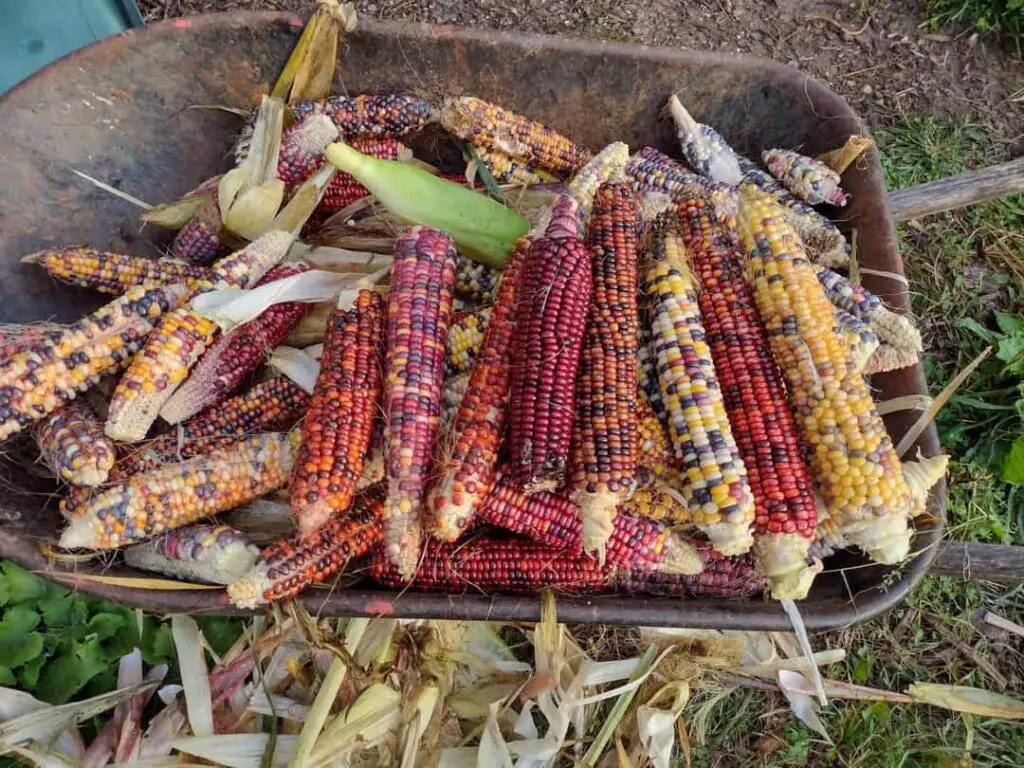
Corn
Corn is a great energy source for pigs. It’s easily digestible and pigs love it. Corn is the most productive grain to grow, which is why it’s so popular for pigs. It’s probably the best one thing to grow for pig feed. While high calorie, it’s low in fiber, protein, vitamins, and minerals.
I grow a fair bit of corn on our one-acre homestead. We primarily grow a flint corn that’s quite productive and has higher protein than standard feed corn. Shelled corn should be soaked or fermented before feeding to soften the kernels and improve digestibility. Fermenting actually adds protein and vitamins.
Wheat
Wheat Is the second most common feed ingredient for pigs. The mature grain is very digestible and energy rich, but the immature green plant is also great for pigs. Wheat can be planted as an annual pasture crop for pigs then the pigs let to forage through the green field.
Wheat grass (young green wheat) is very digestible to pigs, is full of vitamins and minerals, and has a moderate amount of protein. It’s great for the digestion and vigor of the animals. Any fresh green crops are very beneficial for thier nutrition, but a bit low in some of the proteins pigs need.
Because wheat grows fast, it can easily be incorporated into a pasture rotation for pigs. It can be planted in spring for a summer pasture or in summer for a fall pasture that is rich in grass and grain.
The lacking protein is lysine. Lysine is hard to find in plants (exept legume seeds) without something being fermented. With a low-lysine diet, pigs grow slower. But, heritage breed pigs can be adapted to a lower lysine diet and still do alright. Traditionally, pigs have been raised n a low-lysine diet.
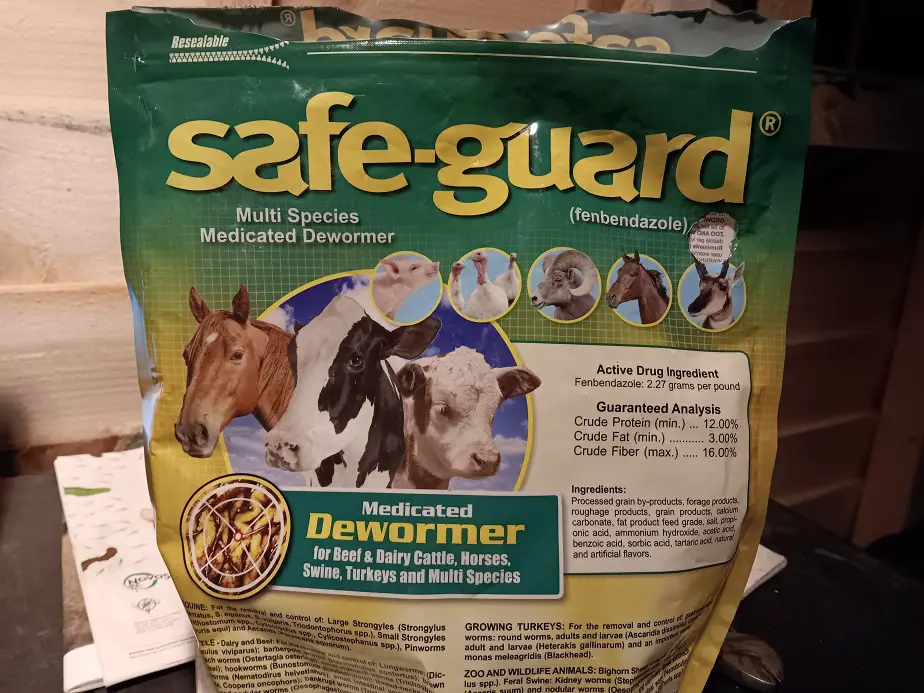
One thing you need for pigs, no matter your raising system, is a parasitic worm treatment. The best swine dewormer is Fenbendazole. It’s known by the brand name Safeguard. Safeguard is available as a medicated corn/alfalfa pellet. It’s the only way I can worm my pigs since they won’t stand still for an injection of Ivermectin. It’s easy and cheap.
- There is a stronger pellet for swine only. Here it is on Amazon
- There is a weaker pellet for general barnyard livestock, including swine. Here it is on Amazon.
I use the multi-species version because it’s what’s available in my local store and I can use it for my chickens too. It’s the most effective swine wormer and the easiest to administer. I use it on all weaned piglets and adults twice a year. Don’t go without it.
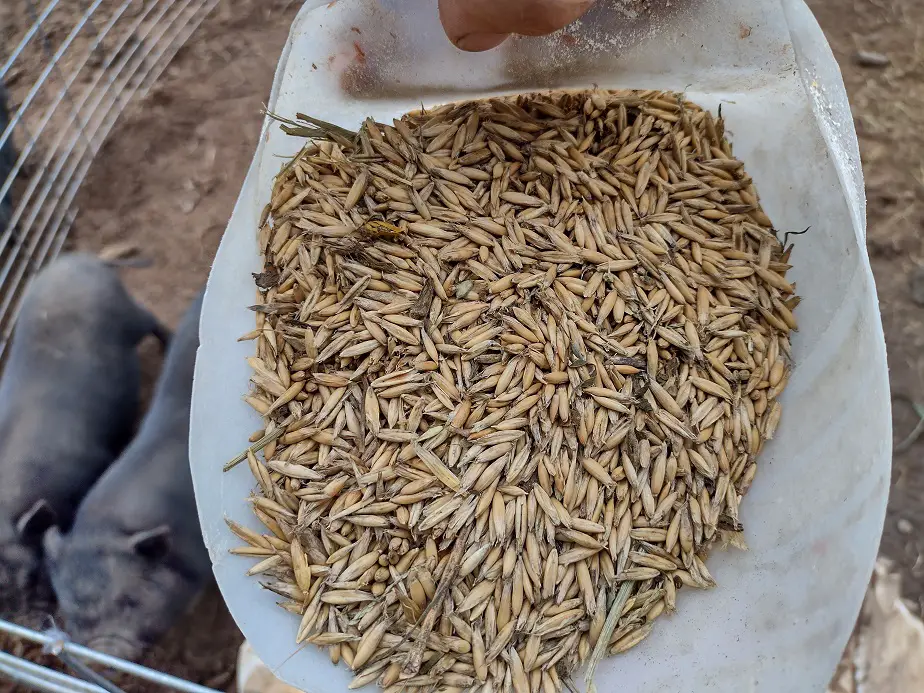
Oats
Oats are my favorite grain to feed pigs. It’s higher protein then other grains, and is unbeatable when fermented. Pigs can be fed dry or green oats, or left to forage an oat field at any stage of development. I planted oats for my pigs with the intention of turning the animals loose in it rit as the seed heads emerge, but before it goes brown.
I actually by whole oats from a local farmer and use that both for feed and for seed. It sprouts and grows great, and the pigs absolutely love it. Planting grains as a green pasturte feed for pigs is old-fashioned but it works. If you keep pigs in a pen, you can still cut and bring the fodder to them.
Rye
Rye is one of the best anual green feed crops for pigs. In years past, it was often planted among corn as a pig-fattening pasture mix. It’s higher protein for a grain, and the green ryegrass is, just like the other grains, very digestable, high in nutritiuon, and has health and vigor boosting properties for pigs.
Rye is one of the more traditinal pig fodder crops. It’s said to give a more desirable flavor and texture to pork fat than other grains. I havn’t tried it myself, but I know several farmers who pasture pigs in stands of rye. They say it works very well for them.
Amaranth
Also called pig weed, amaranth is a high protein grain that actually has decent amounts of lysine. Pigs can forrage through amaranth at any stage of growth, but ony ehrn the seeed heaeds are filled out will it have the protein content. Amaranth is easy to grow and is a popular pig pasture crop in Europe and Asia.
We have a lot of wild amaranth around here. The wild version is often puported to be harsh for animals. My chickens sure don’t seem to mind it though. I guess there is one wild version that contains some harsher compounds. But, a domesticated amaranth is superb as pig fodder.
It’s not overly prodiuctive as a grain, but overall the plant grows decent feed value. Amaranth is probably best used in a pasture crop mix rather than a stand alone pig crop.
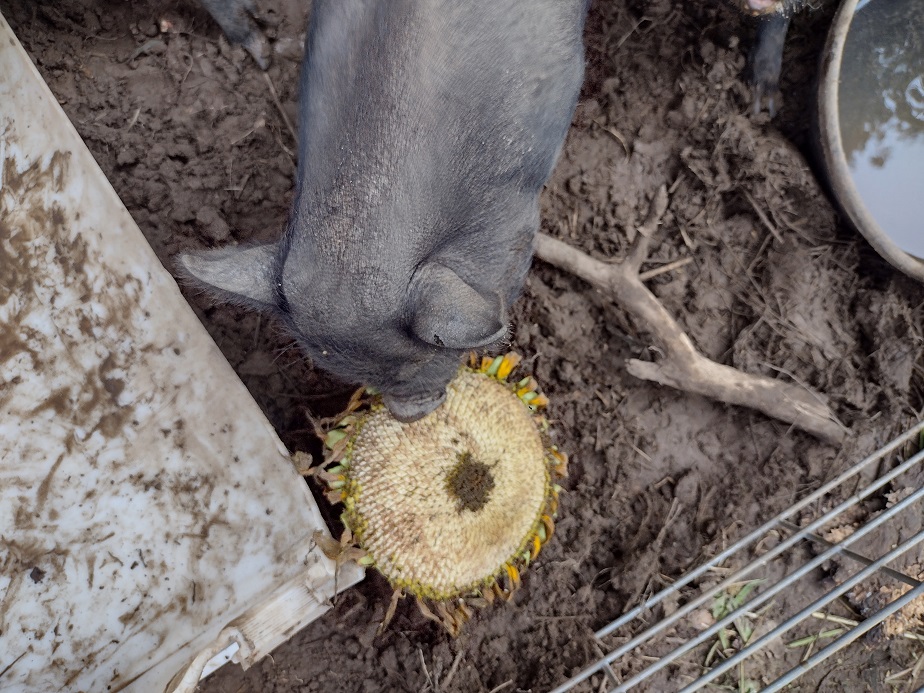
Sunflower
Sunflower is one of the crops I grow for pigs. The seeds are high in both protein and oil. The protein is high in lysine too. Sunflowers of any type can be grown for seed, but Black Oil Sunflower and Russian Mammoth are the most popular. I grow the latter.
Sunflowers are great because they can be planted super early, are frost hardy, and start maturing before other high-protein crops. They’re also super easy to harvest and store. just pick the mature flower heads, dry them in the sun, and toss them in a bin or barrel. I just toss one to the pigs when they need protein.
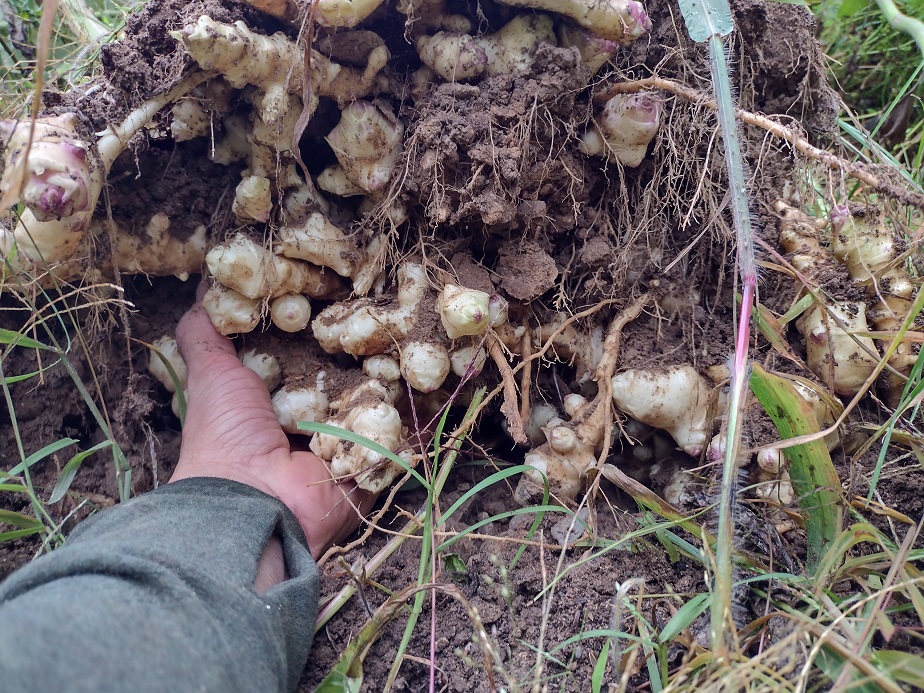
Jerusalem Artichoke
Jerusalem artichoke is technically a sunflower, but it’s grown for the uniqie, potato-like tuber that forms in the roots. Jerusalem artichoke has some decent protein in it, and has a ton of starch. They’re equal in calories to potatoes. They can make up the bulk of a pig’s diet is they are introduced to them slowly.
They can cause gass and discomfort in animals that aren’t adjusted to them. My pigs all eat jerusalem artichoke. It grows really easily and quite prolithic. I can grow more calories per square foot with them than any other crop, so there a winner in my mind. Plus, I like to eat them too.
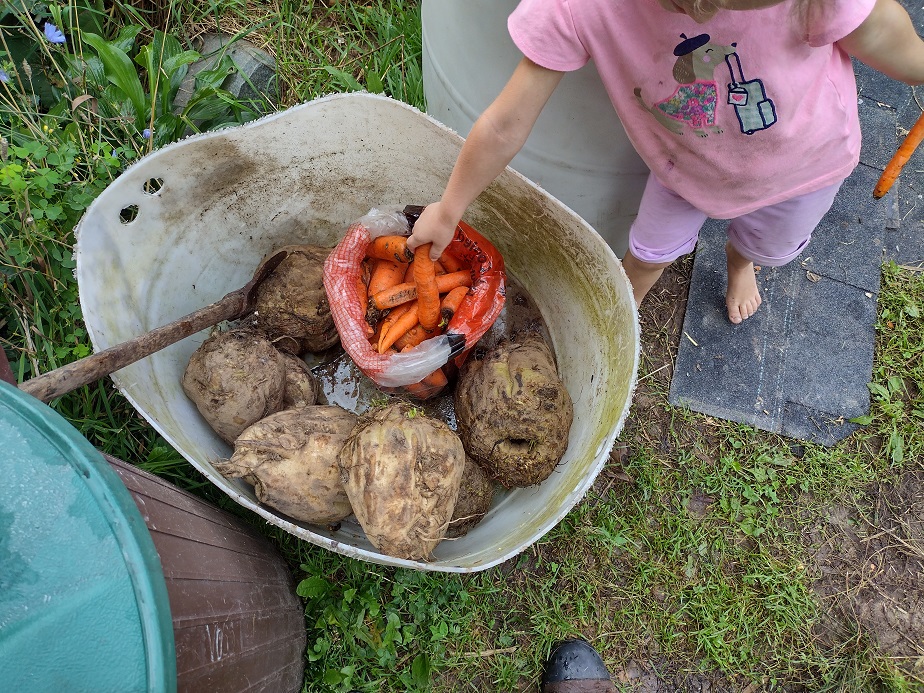
Sugar Beet
Suggar beeet is northern field crop that grows well, produces a lot of vegetation, and has more feed value than green fodders. It tends to have 18-20 percent sugar, and is easily digestable. They grow 10-15 pounds. My pigs will eat sugarbeet, but only if they realize that I’m not giving them grains first.
That’s the thing with a lot of the vegetative fodder, pigs will eat it up but they really prefer the grains, espesially corn. They crave it. My pigs like the beet tops as well as the suggar beet root. Suggarbeet is a complete replacement fo corn silage in dairy cows and is considered a high-energy vegetative feed.
Mangel
Mangel is the lesser sweet cousin to the sugar beet. They grow as large and as fast, produce as much green leafy tops, but have less suggar. Mangels grow mostly above ground and are easily picked by hand, whereas sugar beets require a shovle.
Mangels are good for pigs, offer a lot of vitamins, fiber, and broad-leaf proteins. It’s a better feed for runimants but pigs can still get some value from it, especially pigs older than 4 months. By then, a pig’s digestion has fully developed and they can utalize pasture crops better.
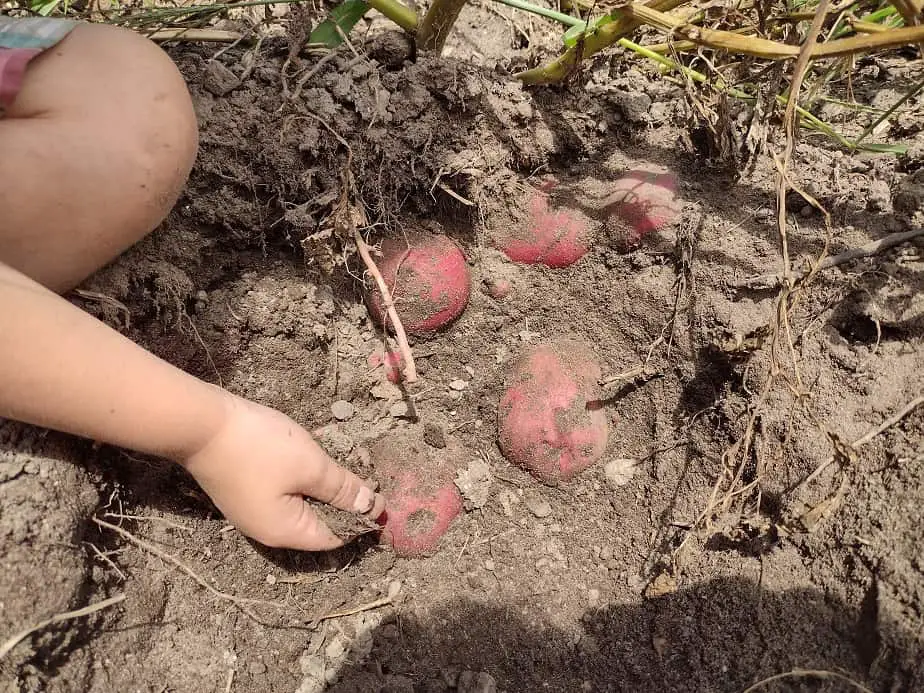
Potato
Potato is lesser common as a pig feed, but it is used and I’ve used it. Potato has moderate protein including lysine, and had plenty of calories. My pigs get the potatoes that are damaged durring harvest. You could actually plant a small field of potatoes and let pigs root through it when they’re ready.
I actually thought about interpanting a paddock of potato and corn. Pigs will definately root up potatoes and will also tear down cornstalks to get the grain. Between the potatoes, ears of corn, and the green cornleafs my pigs like so much, it’s actually a pretty good diet to finish a herd of pigs.
Alfalfa
Alfalfa is a hardy and productive perenial that’s full of plant nutrients. Giving a little alfalfa to pigs helps the, stay healthy and grow better. Pigs can forrage directly in alfalfs and they love it. Alfalfa is high in vitamins, minerals, and protein, but low in lysine so the pigs will benefit from some other lysine source.
Alfalfa improves lactation in sows, is said to increase breeding success, and makes opigs overall more vigourous. It works. I’m planting alfslfa this year for my pigs. It’s a perenial so if pigs root through it, it’s going to grow back fairly well. Alfalfs is a superb fodder crop and combines well with others.

Clover
Clover is similar to alfalfa, but a little lower in protein and vitamin/mineral content. Clover has all the same benefits as alfalfa, just maybe slightly less. Crimson clover and white clover are commonly included in a pig pasture seed mix. They are hard perenials and are hard to kill off, plus pigs love clovers.
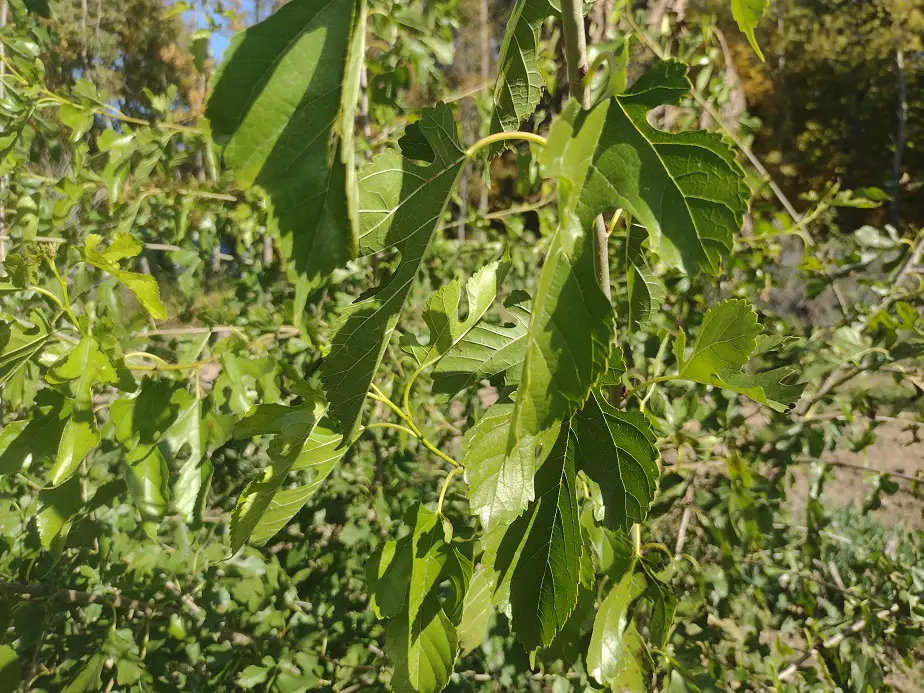
Tree Hay
Tree hay is simply green leaves from trees, either fresh or dried. Pigs do like leafy greens, and tree hay is often considered superior to other options. The most common trees used are mulberry and poplar. Both have an exelent nutritional profile and are high in protein. I feed tree hay to my pigs.
It’s farmed by cutting the main trunk of a tree short, making the tree look like a bush. A well managed row of trees like that will produce more hy than a traditinal grass or alfalfa pasture. I try and feed a handfull of tree leaves every day to my pigs. I’m actually planting a row of trees just for this.
A sileage made from tree leaves is exeptionally good for pigs and only needs a little fermented gtrain as a suplement to be a complete feed. It’s a very good but seldom known feed option. Tree hay, especially from mulberry, is a superior hay product either dried of fresh.
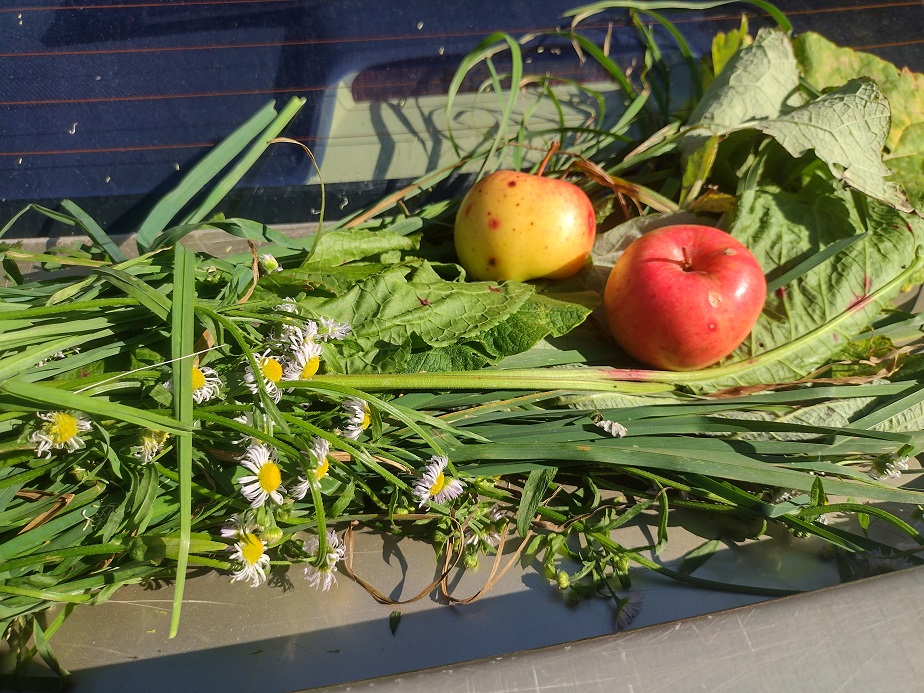
Apples
Apples are an older traditional pig feed. Their starch and sugar content were used to fatten pigs before grains were mechanically harvested. Apples with bugs or those that fall to the ground are great for pigs. I have one mature apple tree and am planting others this year specifically so we can have more pig feed.
Apple trees that aren’t sprayed for bugs and tended well usually have a lot of loss. That’s perfect for home raised pigs. Even green apples from thinning the crop are good for pigs, just don’t over do them. One apple is about 100 calories and our small breed pigs need an average of 500 calories a day up to butcher.
Pears
Pears are a great source of calories and starch for pigs, and they are lower maintanance than apples. Pears are lower acid than apples, which means you can feed them more heavily without digestive issues. Basicaslly, it’s a great energy source to help fatten a growing pig to butcher through the summer.
Mulberries
Mullberries can outproduce other fuit trees in sugar. Red mulberry and white mulberry ripen around late spring, and black mulberry ripens in early to mid summer, just before the earliest apples are ready. Mullberries are full of sugar and antoxidents, but it’s the sugar we want. Pigs need the energy.
I’m planting a row of mulberry this year, some for leaf production and some to let go to fruit, all for the animals. It’s the most reliable and one of the highest producing fruits I know of. I’m planting then just outside of my pasture fence so the ripe berries will tend to fall in the pig pasture.
Tree Nuts
Hazlenuts, hickory nuts, chestnuts, acors, and buckeyes are great for pigs. They offer some protein, a decent amount of fat, and overall good caories. unfortunately, wild trees are very unreliable producerts of nuts. Comercial varieties are much less variable, have more meaty nuts, and produce much earlier.
I’m going to plant an assortment of nut trees this year just for the pigs in an effort to become more feed sufficient. We have a lot of oaks on the property, but they don’t produce many acorns most years. The last few years, there’s hardly been any acorns.
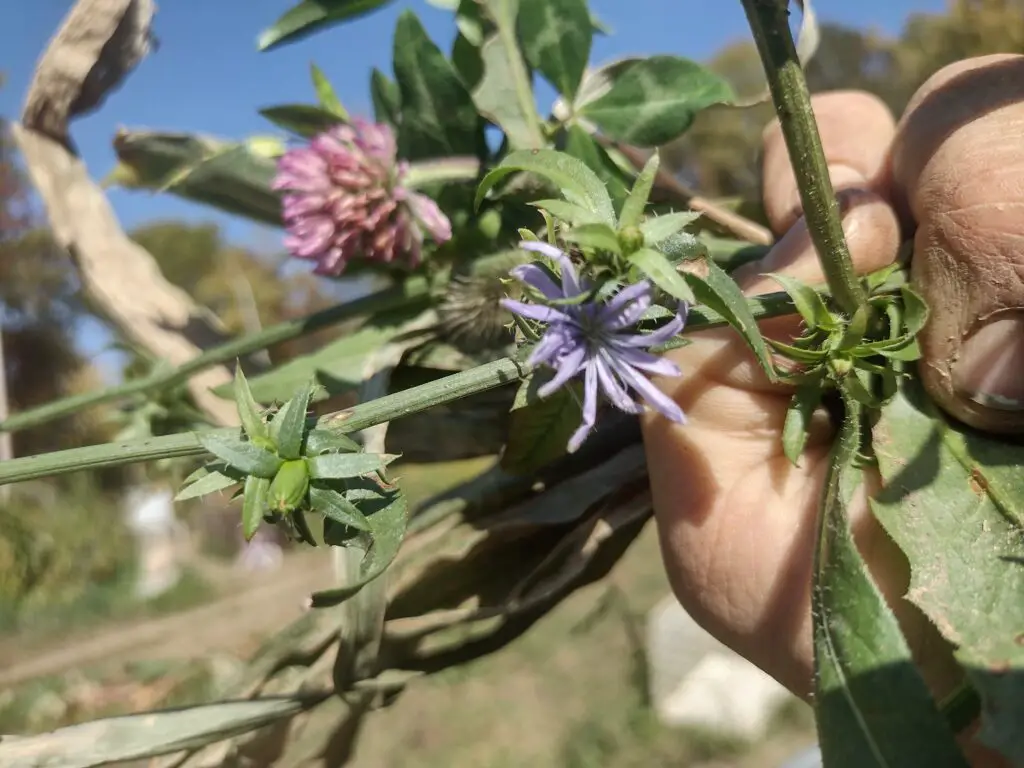
Chickory
Chickory is an amazing wild perenial that pigs like and benefit greatly from. Chickory is high in solenium, which is hard for pigs to get. A lack of solenium causes Whuite Miscle disease, which ends up in muscle stiffness and lameness. Fortunately, it’s easily treatable with solenium.
Chickory is very high in the hard to get minerals. It’s a great supplement for pigs. My pigs love to dig up the starchy taproot and munch on them. I seeded a small pasture with chickory last year so the pigs will get all they care to have this summer.
Wild Grasses
Wild grasses are the easiest fodder crop to maintain. as long as it’s not overgrazed, it’s going to keep coming back. Grass is not very energy-rich, but it’s full of vitamins and minerals, and pigs can get a good bit of energy from it. Older pigs can digest grassy fodder fairly well, it’s the younger pigs that can strugle more with it.
Pigs can’t relly eat too much grass. It’s great for thier gut, and they do like it. Just be sure to give them something to boost up the calories and to add some good protein (including lysine) to thier diet.

Turnip
Turnips are a traditional European pig fodder. Turn oigs loose in a turni pasture and they’ll eat the tops first, them work on the bulging roots. Turnips are low-calorie, low-protein, and by themselves are a poor feed for pigs. Still, pigs have been raised on nothing more than a field of turnips.
A pig can adjust to do better on lower-grade feed, and over several generations, pigs can be seleced to preform better on such feed. They will grow slower, which means feeding them longer. But, that’s hardly a problem if your’re growing all thier feed. You can also supplement with someting like sunflower or corn.
Beans
Beans of all types are full of starch and protein. I’m talking the mature bean seeds like what you put in chili. They are fairly high in all the harder to find proteins like lysine. The most common is soybean, but that one has been scrutinized due to health concerns when used heavily.
Any kind of bean can be planted then fed to pigs. But’ they don’t espesially like them. Beans are best when thouroughly dried. Raw beans are hard on a pig’s gut. Still, some folks plant beans with corn or other grain and turn out the pigs into it so they can fatten up.
Peas
Peas of any kind can be a protein supplement for pigs. Field peas are more commonly used than other varieties in livestock feed. Peas have great protein and a good starchy energy base. Peas can be included in a pig fodder mix and will realy help it be well-rounded.
Best Pasture Mix for Pigs
The best thing to plant for pigs is a mix of several plants, covering all categiries. Pigs need carbohydrates, fat, protein, and good greens. It’s good to have more than one for each category if you can. Most deer feed plot seed mixes are actually a good solution for small pig pastures.
You can plant a crop that the pigs will roam through and forage on thier own, or you can harvest it and serve it ti the pigs. I do some of both. shorter groweing plants can be sown together. Some things, like corn, potatoes, and jerusalem artichokes, are best planted in blocks or patches within the pasture.
If planting a crop that you want to go and harvest feed from, plant each selection seperately. It’s easier to manage that way.
Here are a few fodder crop seed mixes I would use.
- Corn, sunflower, Jerusalem artichoke, wild grasses
- Corn, clover, pea, potato
- Alfalfa, oats, sugarbeet, sunflower
- clover, turnip, oat, bean, corn
- tillage radish, chickory, wheat, oat, bean, pea
- mangel, clover, sunflower, amaranth,
Related Articles:

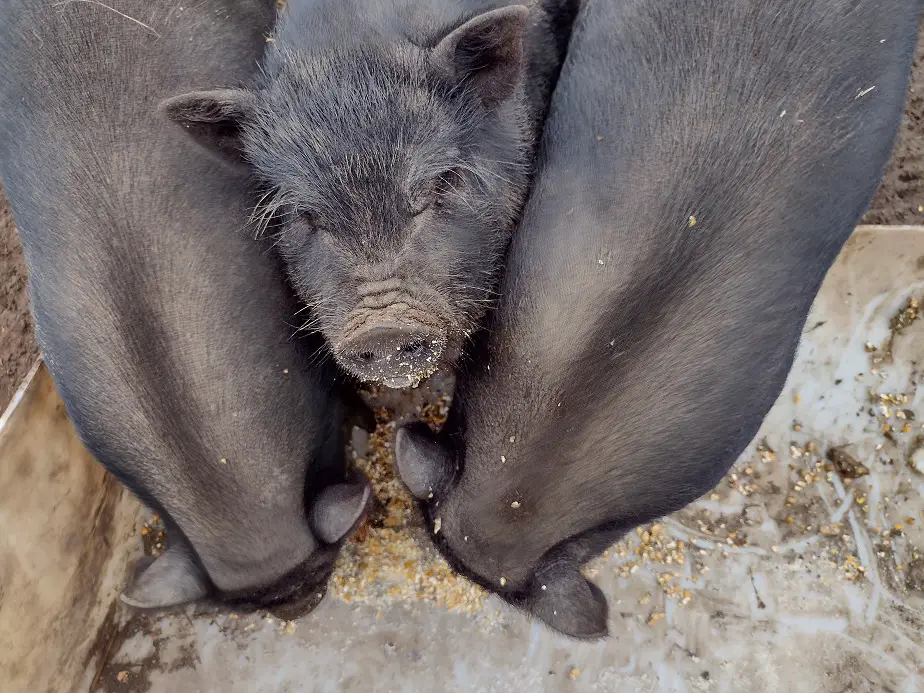
Can you share what seeds you use and where you get them?
I started with my Indian corn by bying 10 seed packs from Baker’s Creek Heirloom Seeds. It’s expensive, but that gave me a good variety to choose from. Shumway’s has a decent selection of some interesting seeds in bulk. other than that, I’ll go to my local grain elevator or search online.